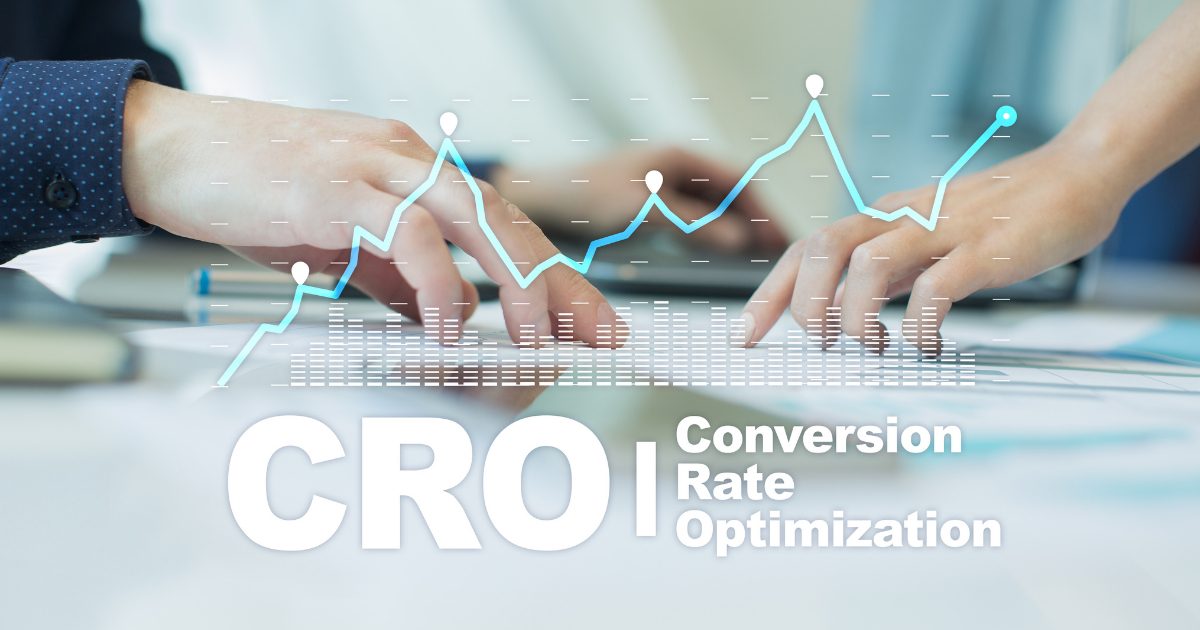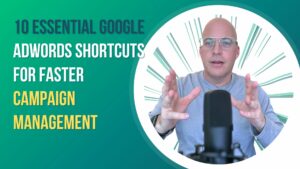In the evolving digital world, a strong online presence has shifted from a mere luxury to an absolute necessity, particularly for mortgage companies striving to flourish in a highly competitive market. As potential homebuyers and borrowers continue to gravitate towards the Internet for their mortgage-related queries and research, a comprehensive digital marketing strategy becomes indispensable for mortgage firms to remain ahead of the competition and attract a continuous flow of qualified leads. In today’s dynamic marketplace, embracing the digital age is not an optional decision; rather, it is a pivotal determinant of success in the mortgage industry.

Understanding the Digital Landscape
Embracing the Digital Age
Embracing the digital age is not just a choice but a strategic move that can define the success or failure of a mortgage company’s marketing campaigns. With the increasing reliance of potential homebuyers and borrowers on the Internet, it is evident that traditional marketing is not enough to stay competitive.
The Power of Online Search
When homebuyers and borrowers have questions or seek mortgage-related information, they first turn to search engines. Mortgage companies must recognize the significance of this behavior and optimize their online presence to rank higher in search engine results. By implementing Search Engine Optimization, mortgage companies can increase their visibility, gain credibility, and become the go-to source for mortgage services.

Building a Solid Website
User-Friendly Interface and Navigation
When potential homebuyers and borrowers visit your website, they should find it easy to navigate, with a seamless and intuitive design. A clutter-free layout, clear calls-to-action, and easily accessible information are essential to keep visitors engaged and encourage them to explore your services further.
Engaging Content and Visuals
Informative and valuable content, such as mortgage guides, blog posts, and videos, not only positions your mortgage company as an industry expert but also fosters trust and credibility with potential clients. Compelling visuals, including high-quality images and relevant infographics, complement your content and create a visually appealing browsing experience.
Mobile Optimization
A mobile-friendly website provides a seamless experience for mobile users, preventing them from leaving due to slow loading times or difficult navigation. Moreover, search engines prioritize mobile-friendly websites, meaning a lack of mobile optimization can negatively impact online visibility. By embracing mobile optimization, mortgage companies can cater to a broader audience and tap into the growing segment of mobile users.

Harnessing the Potential of SEO
Keyword Research and Implementation
Mortgage companies can optimize their online presence and increase visibility on search engines by identifying popular and industry-specific keywords through tools like Google Keyword Planner and strategically integrating them into website content and meta tags. Ensuring that the keywords flow naturally within the content allows potential clients to find the relevant information they seek, leading to increased website traffic and the likelihood of converting leads.
Creating Valuable Content for Users
The foundation of any effective SEO plan lies in creating valuable, informative, and authoritative content. By crafting content that resonates with potential clients, mortgage companies can draw more visitors to their websites and establish themselves as industry experts. As users find valuable insights and solutions within the content, they are more likely to trust and engage with the mortgage company.
Emphasizing Local SEO
Local SEO is a game-changer for mortgage companies, as it allows them to optimize their website for local searches and gain visibility among potential clients in their service area. Mortgage companies can provide information to local prospects, making it easier for them to find and connect with the business. Embracing local SEO tactics increases the chances of attracting nearby homebuyers and borrowers.

Dominating with Social Media
Choosing the Right Platforms
Focus on the most relevant platforms for your target audience to make the most of your social media efforts. For instance, Facebook and LinkedIn are excellent choices for B2B marketing, as they cater to a more professional and business-oriented audience. Engage with potential partners, real estate agents, and industry professionals.
These visually-driven platforms resonate with millennials and Gen Z, allowing you to showcase your mortgage company’s services creatively and authentically. You can maximize engagement and generate meaningful connections by tailoring your social media presence to specific platforms that align with your target audience.
Engaging with Your Audience
Responding to comments, messages, and inquiries promptly shows that you value your followers and are attentive to their needs. This interaction fosters trust and connection, encouraging potential clients to view your mortgage company as approachable and reliable.
Engaging content not only keeps your audience entertained but also positions your mortgage company as an authority in the industry. This sense of community helps strengthen brand loyalty and fosters a positive perception of your services. An engaged and active social media presence can increase word-of-mouth referrals and a wider reach for your mortgage company.
Using Paid Advertising Effectively
Paid social media advertising is a tool that enables mortgage companies SEO to reach a highly targeted audience with precision and efficiency. By utilizing the advanced targeting options offered by platforms like Facebook Ads, you can connect directly with potential clients who align with your ideal customer profile.
With paid social media advertising, you can specify parameters such as location, age, gender, interests, and even specific behaviors, ensuring that your ads are shown only to those most likely interested. By leveraging the potential of paid social media advertising, mortgage companies can expand their customer base, boost brand awareness, and drive more targeted traffic to their website.

Nurturing with Email Marketing
Creating Compelling Email Campaigns
Delivering informative and relevant content, such as mortgage guides, interest rate updates, and personalized offers, establishes the mortgage company as a reliable source of information and an industry expert. Personalization and segmentation further enhance the effectiveness of email marketing, tailoring content to specific groups of subscribers based on their preferences and interactions.
Effective email marketing lets Mortgage Companies SEO stay top-of-mind with their audience, increasing engagement and conversion rates. By consistently providing value and addressing the unique needs of their subscribers, mortgage companies can create a loyal customer base that views them as trusted partners in their homeownership journey.
Personalization and Segmentation
Mortgage companies can deliver targeted and relevant email messages by understanding their subscribers’ interests, preferences, and needs. Segmenting the email list allows them to group subscribers based on various criteria, stages in the home-buying process, or specific mortgage interests.
Personalization ensures subscribers receive content that speaks directly to their requirements, fostering a deeper connection and enhancing user experience. Sending tailored messages that resonate with specific audience segments leads to higher open and click-through rates and increased chances of converting leads into satisfied clients.
Automated Drip Campaigns
Automated drip campaigns are a great tool for mortgage companies seeking to maintain a consistent and personalized connection with their leads and clients. These drip campaigns can be tailored to address different audience segments’ specific needs and interests, providing valuable information and insights at each customer journey stage.
With automated drip campaigns, mortgage companies can nurture leads and clients without requiring continuous manual effort, freeing time to focus on other critical aspects of their business. Mortgage companies can build trust, credibility, and brand loyalty by consistently engaging with their audience through these campaigns.
Winning with Pay-Per-Click (PPC) Advertising
Targeting Relevant Keywords
Ensure ads appear in search engines or relevant websites when users search for those keywords. This targeted approach allows you to reach a highly relevant audience. It increases the chances of attracting qualified leads to your website.
Conducting thorough keyword research is essential for PPC success. Optimize your PPC campaigns and achieve a higher return on investment (ROI). Regularly monitoring and optimizing your PPC campaigns allow you to fine-tune your ad strategy.
Crafting Compelling Ad Copy
Crafting compelling ad copy is an art form that holds the key to capturing the attention of your target audience. You must understand your audience’s needs, desires, and pain points to create ad copy that engages and converts. Moreover, your ad copy should highlight the unique selling propositions.
Incorporating clear and compelling calls to action encourages users to click or make a purchase. It drives conversions and achieves your marketing goals. Moreover, crafting persuasive ad copy can turn prospects into loyal customers and elevate your brand.
A/B Testing for Optimal Performance
Optimizing PPC campaigns through A/B testing is a smart and data-driven approach for maximizing their effectiveness. You can determine which elements significantly impact driving clicks and conversions.
Gain valuable insights into preferences and behaviors, enabling you to refine your PPC strategies accordingly. Continuously iterating and optimizing based on A/B test results allows you to make data-backed decisions. Moreover, it ensures that your PPC campaigns consistently deliver the best possible results and achieve your marketing objectives.

Converting with CRO (Conversion Rate Optimization)
Analyzing User Behavior
Track user actions such as page views, time spent on pages, click-through rates, and conversion funnels. This data provides valuable insights into user engagement, helping you identify which content resonates the most with your audience.
Pinpoint specific pain points that might discourage visitors from taking the desired actions on your website. Furthermore, addressing these pain points by optimizing content, enhancing navigation, and improving page load times. Moreover, it increases the likelihood of conversions.
Optimizing Landing Pages
Your landing pages are the bridge between your ad campaigns and lead conversions. To optimize your landing pages effectively, ensure seamless alignment with your ad messaging. Moreover, consistency in messaging, visuals, and offers builds trust and encourages visitors to take the next step.
Compelling calls-to-action (CTAs) are a driving force behind successful conversions. Moreover, craft clear and persuasive CTAs that prompt visitors to take action. Furthermore, utilize contrasting colors, bold fonts, and strategic placement to make the CTA stand out.

Tracking and Analytics
Setting Up Tracking Tools
Implementing tracking tools like Google Analytics is essential for mortgage companies to monitor their website’s performance and marketing efforts. Moreover, understand how users interact with your website, identify strengths and weaknesses, and optimize your strategies accordingly.
Mortgage companies can monitor and analyze data to stay ahead of the competition and refine their marketing strategies. These tools provide valuable feedback on the effectiveness of different marketing channels and campaigns. Furthermore, it enables you to allocate resources wisely and improve your overall ROI.
Measuring Key Performance Indicators (KPIs)
Identifying and measuring key performance indicators (KPIs) that align with business goals is essential for tracking progress and success. Moreover, analyzing conversion rates provides valuable insights into how well your website and landing pages convert visitors into leads.
By regularly tracking these KPIs, mortgage companies make data-driven decisions and refine their strategies. Furthermore, the ability to measure progress toward business goals empowers one to identify areas for improvement. It enables you to capitalize on successful tactics and, ultimately, drive better results for your mortgage company.
Making Data-Driven Decisions
Mortgage Companies SEO can make well-informed decisions that lead to improved digital marketing performance. Continuous analysis of key metrics provides valuable insights and the overall success of campaigns.
Data-driven decision-making enables mortgage companies to stay agile. Moreover, analyzing performance data allows companies to adapt their strategies quickly.
FAQs
What is digital marketing for mortgage companies?
Digital marketing for mortgage companies uses online platforms and channels to promote their services and attract potential clients.
Which digital marketing strategies are effective for mortgage companies?
Effective digital marketing strategies for mortgage companies include design and conversion rate optimization.
What role does SEO play in digital marketing success for mortgage businesses?
SEO plays a role in digital marketing for mortgage companies as it helps improve their organic search rankings.
How can email marketing benefit mortgage companies?
Email marketing benefits mortgage companies by nurturing leads, maintaining client relationships, and providing valuable content to subscribers.
How can mortgage companies track and analyze their digital marketing efforts?
Mortgage companies can track and analyze their digital marketing efforts by implementing tracking tools and measuring key performance indicators (KPIs).

Mortgage Companies: Boosting Your Online Presence for Success!
Digital marketing offers opportunities for mortgage companies to thrive and succeed. By embracing the digital age, building a user-friendly website, leveraging Mortgage Companies SEO, dominating social media, and others. Creativity and adaptability are your greatest allies in the digital realm, so continuously innovate and stay ahead of the competition!
Reference Links
Federal Trade Commission (FTC): www.ftc.gov
Consumer Financial Protection Bureau (CFPB): www.consumerfinance.gov
Mortgage Bankers Association (MBA): www.mba.org








